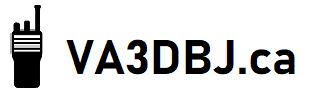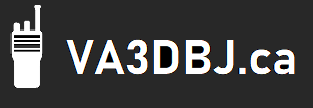As announced in The Canadian Amateur magazine, the RAC Band Planning Committee has completed the new proposed 2m band plan.
Radio Amateurs of Canada band planning committees coordinate the development of National Band Plans to provide guidance for the usage of the Canadian Amateur bands. These committees are made up of representatives from all regions of Canada.
The committees prepare interim band plans after consulting with Amateurs across the country. These plans not only take into account the wishes of Canadian Amateurs, but are also coordinated with band usage in other countries through membership in the International Amateur Radio Union (IARU).
The RAC Board of Directors extends thanks to the members of the RAC Band Planning Committee for undertaking the task of reviewing and updating the VHF and UHF band plans over the next year.
A draft of the band plans is provided below for final input before it is submitted to the RAC Board of Directors for approval. If you have any comments or suggestions please send them to Serge, Bertuzzo, VA3SB, RAC International Affairs Officer, at [email protected].
RAC Band Planning Committee
Chair: Al Penney, VO1NO
Members:
- Bill Elliott, VE1MR
- Don Falle, VE2DFO
- Stuart Truba, VE2XX
- Dana Shtun, VE3DS
- Derek Hay, VE4HAY
- Ken Oelke, VE6AFO
- Skip MacAulay, VE6BGT
- Ernest Clintberg, VE6EC
- Don Moman, VE6JY
- Mitchell Goodjohn, VE6SM
- Grant Furnald, VE6TA
- Ed Frazer, VE7EF
- George Merchant, VE7GM
- Dave Miller, VE7HR
Serge, Bertuzzo, VA3SB
RAC International Affairs Officer
[email protected]
| Frequency | Modes and Possible Uses (please see the Notes provided below) |
| 144.000 – 144.100 | EME, Narrow Band Digital, CW, Weak Signal Modes. See Note 1 below.JT65 centred on 144.085 JA Window. See Note 2. |
| 144.100 – 144.180 | CW, SSB, Narrow Band Digital, EME, Weak Signal Modes. See Note 1.144.174 FT8, 144.144/144.150 MSK144 Meteor Scatter, 144.115 – 144.135 Digital EME centred on 144.125 MHz. See Note 2 |
| 144.180 – 144.265 | CW, SSB, Narrow Band Digital, EME, Weak Signal and other Narrow Band Modes. See Note 1.Other modes with bandwidths less than 3 kHz, including FAX and SSTV.144.200 SSB and CW Calling Frequency. See Note 3. |
| 144.265 – 144.270 | No transmissions – Guard Band to protect Beacon Network. |
| 144.270 – 144.300 | Propagation Beacon Network Exclusive.Note that 144.300 is the IARU Region 1 Calling Frequency, and could be used for Trans-Atlantic Attempts. |
| 144.300 – 144.310 | No transmissions – Guard Band to protect Beacon Network.Note that 144.300 is the IARU Region 1 Calling Frequency, and could be used for Trans-Atlantic Attempts. |
| 144.310 – 144.500 | Wide Band Digital Modes (e.g.: Packet, APRS). See Note 1 and Note 4.144.340 – National ATV Voice Coordination Frequency FM.144.390 – National APRS Frequency. See Note 5.144.489 – National WSPR Frequency. |
| 144.500 – 144.900 | FM / Digital / Linear Repeater Inputs. See Note 6. |
| 144.900 – 145.100 | Wide Band Digital. See Note 1 and Note 7. |
| 145.100 – 145.500 | FM / Digital / Linear Repeater Outputs. See Note 6. |
| 145.500 – 145.590 | ARISS Links – Space Communication Exclusive. |
| 145.590 – 145.790 | Wide Band Digital Modes. See Note 1 and Note 8. |
| 145.790 – 145.800 | No transmissions. Guard Band to protect Satellite Sub-band. |
| 145.800 – 146.000 | Amateur Satellite Uplink / Downlink and ARISS Exclusive. |
| 146.000 – 146.010 | No transmissions. Guard Band to protect Satellite Sub-band. |
| 146.010 – 146.370 | FM / Digital / Linear Repeater Inputs. See Note 6. |
| 146.400 – 146.595 | FM Simplex. See Notes 9 and 10.146.520 – National FM Calling Frequency. See Note 3. |
| 146.610 – 147.390 | FM / Digital / Linear Repeater Outputs. See Note 6. |
| 147.420 – 147.570 | FM Simplex and Digital Hotspots using a 30 kHz raster. See Note 11 and Note 12.Note that Digital channels are interwoven between these FM Simplex channels. |
| 147.435 – 147.585 | Wide Band Digital. See Note 1 and Note 13.Note that these Digital channels are interwoven between the FM Simplex channels at 147.420 – 147.570. |
| 147.600 – 147.990 | FM / Digital / Linear Repeater inputs. See Note 6. |
Notes for Proposed Two Metre (2m) Band Plan:
Note 1: Narrow Band Digital 2m modes are those with bandwidths of 3 kHz or less; for example, WSJT modes. Wide Band Digital 2m modes are those with bandwidths greater than 3 kHz but less than 30 kHz; for example, Packet.
Note 2: Consult with the WSJT community regarding frequencies for EME and Terrestrial operations as these change with modulation schemes.
Note 3: Once contact is established on a Calling Frequency, operators should QSY to another frequency. For 144.200 MHz it is generally down for CW, and up for SSB. For 146.520 MHz FM, it is to any other clear FM simplex channel.
Note 4: Seven frequencies on a 20 kHz channel raster: 144.37, 144.39, 144.41, 144.43, 144.45, 144.47 and 144.49. Occupancy is to occur only when available Digital frequencies within the sub-bands 144.9 – 145.1 MHz and 145.59 – 145.79 MHz are exhausted. Consult with your local digital coordination body regarding maximum ERP, Bandwidth and coverage area within this sub-band. Operation may occur on 144.31 MHz provided operating bandwidth and ERP do not cause harmful interference within the propagation beacon network sub-band.
Note 5: Consult with your local coordination body.
Note 6: Repeaters include FM, Digital (DMR, Fusion, DSTAR and related) and linear modes. Consult with your local coordination body for frequencies and modulation scheme allocations specific to your area, if available. Hotspots are not to be used on Repeater frequencies.
Note 7: Ten frequencies on a 20 kHz channel raster: 144.91, 144.93, 144.95, 144.97, 144.99, 145.01, 145.03, 145.05, 145.07 and 145.09. Consult with your local coordination body.
Note 8: Eleven frequencies on a 20 kHz channel raster:
145.59, 145.61, 145.63, 145.65, 145.67, 145.69, 145.71, 145.73, 145.75, 145.77 and 145.79 MHz. Consult with your local coordination body.
Note 9: The frequencies 146.40, 146.43 and 146.46 MHz continue to be used as repeater inputs in some areas. Consult with your local coordination body.
Note 10: Thirteen channels on a 15 kHz channel raster: 146.415, 146.430, 146.445, 146.460, 146.475, 146.490, 146.505, 146.520, 146.535, 146.550, 146.565, 146.580 and 146.595 MHz.
Note 11: Six channels on a 30 kHz channel raster, 147.420, 147.450, 147.480, 147.510, 147.540, 147.570 MHz.
Note 12: The use of Digital Hotspots is not recommended on 2m. If they are used however, maximum power output should not exceed 500 mW. Gain antennas should not be used. The control operator must monitor the Hotspot whenever it is operating.
Note 13: Six channels on a 30 kHz channel raster: 147.435, 147.465, 147.495, 147.525, 147.555 and 147.585 MHz. Consult your local coordination body for available frequencies, ERP and bandwidth.
Serge, Bertuzzo, VA3SB
RAC International Affairs Officer
[email protected]










